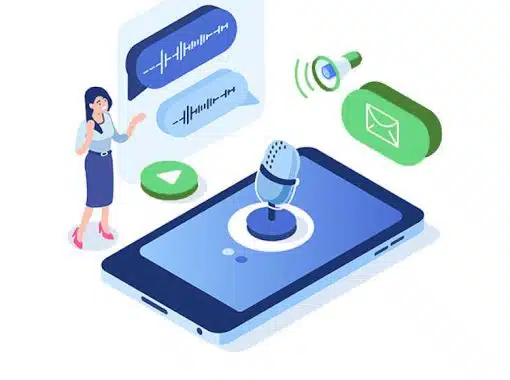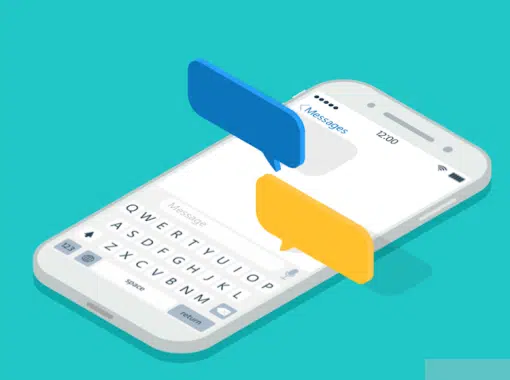
In many ways, call tracking is like the Swiss Army knife of marketing tech: It has many uses, but it’s often underutilized. To get the most out of a marketing strategy that hinges on call tracking, it helps to understand what it is, how it works, and how to use it to boost the effectiveness of your operation. Here are the essentials of using call tracking to improve your marketing processes.
What Is Call Tracking?
Call tracking involves assigning local numbers, local vanity phone numbers, or vanity 800 numbers to a business line. In this way, any calls that go to that number get forwarded to the business line.
For example, you may have a single business line to receive calls from several different areas within 30 miles of a central location. Suppose you’re in the Boston area and own a florist shop that caters to corporate clients. You have a vanity phone number for multiple surrounding areas: Framingham — 800-FRAM-ROSE; Newton — 800-NEWT-ROSE; Dorchester — 800-DORCH-ROSE; Lynn — 800-LYNN-ROSE.
Whenever someone calls one of these numbers, the call automatically gets forwarded to a business phone system where someone handles the caller’s order. In this way, you can use a few phone staff to manage several locations at once.
What Kind of Data Can You Analyze with Call Tracking?
Routing calls is merely the tip of the iceberg with call tracking. You also have the opportunity to mine critical business data that you can use to adjust your marketing operations. With call tracking, you put yourself in a position to glean the kind of data that can enable you to pinpoint trouble spots in your marketing strategy and address any issues.
For example, you can use call tracking to:
- See from which number the call originated.
- See from where the call came.
- Get the caller’s name.
- See important call details, such as when the call was placed and how long it lasted.
This data provides a high-level snapshot of each call, the person calling, and some key circumstances surrounding the interaction. Here are some ways to use this data to fine-tune your marketing machine.
Use Call Tracking to Gauge Which Vanity 800 Number Campaigns Are the Most Effective
How much is a 1-800 number? While the cost can vary, the payoff is often more than enough to justify the investment. But it can be difficult to get hard data on your ROI unless you know which calls stem from which number, and this is where call tracking comes into play.
Using the example above — a Boston-based corporate florist — the origin of each call tells you a lot about how effective is each individual 800 number. With call tracking, you can count the number of calls you get from each source and then analyze that data to identify and address issues.
For example, if the number used in the Framingham campaign is getting a lot of calls, while the one in the Lynn campaign is getting hardly any, there could be an issue with the Lynn number, particularly how it’s being marketed. With this data in hand, you can check your Google analytics around the ad campaigns that featured the Lynn number. If the Google analytics data reveals that your click-through rate is less than what you anticipated, that could mean that customers aren’t getting exposed to enough of your online marketing assets to feel compelled to call the number.
In some cases, for instance, you may discover that while people are hitting your landing page, they aren’t progressing to a gallery featuring the different choices you offer. By using call tracking, you get the business intelligence you need to point you in the right direction, instead of merely sitting back scratching your head, wondering what went wrong.
Use Call Tracking to Identify the “Ideal” Call
The time it takes to secure a sale varies from one product to the next, but, generally speaking, the longer someone spends on the phone, the better. Because they’re free to hang up whenever they want, extended time on the phone can indicate trust in the sales associate, product, or satisfaction with the level of service they’re getting.
On the other hand, some people may spend a long time on the phone for reasons that don’t support an effective sales strategy, such as shifting between people putting them on hold. With call tracking, you get the data you need to ascertain the “ideal” call, from a sales perspective, especially when it comes to the length of time.
You can use this information to:
- Coach sales associates on how to engage customers in the kind of conversation that meets their needs and makes them comfortable.
- Set targets for associates that under-engage, encouraging them to spend a little more time building relationships with leads while on the phone.
- Encourage associates with the gift of gab to shoot for a little less time talking and more time listening.
Call tracking data also puts you in a position to correlate successful calls with important business metrics. This enables you to better pinpoint both the “ideal” call and replicate successes to create more sales-friendly phone interactions.
To do this, you can use call tracking to:
- Compare the number of unique callers to those who’ve called before. If vanity 800 numbers with more return callers are earning more sales, for example, there’s something each associate is doing well to encourage people to call back, more motivated to make a purchase.
- Keep track of the number of voicemails customers leave. While a voicemail may be a one-way interaction, it can be a sign of interest. All other things being equal, if the caller is calling back, for instance, this could indicate they had a positive experience during previous calls.
- Hone in on the time of day the call was placed. If people tend to call after work on their way home, for example, you could use this data to better time when you post content on social media — between 3:30 pm and 5:00 pm may be better than early in the morning.
Quantify the Success of Ad Campaigns
To see which ad campaigns are performing the best, you can simply assign a unique number for each campaign and then track its call data. This enables you to accurately attribute the success with the campaign that should get the credit, instead of looking at your overall campaign portfolio and equally distributing credit — or blame.
For example, suppose you’re in charge of marketing for a plumbing company. The business works by recruiting plumbers from different areas and when someone needs work done, the company reaches out to one of the local plumbers on the team. To better target specific areas, you do several social media campaigns. Some involve paid advertising, while others incorporate posting links to articles about plumbing issues.
You want to know which campaign best motivates your target market to reach out and request or inquire about service. The paid ads seem expensive because clicks don’t necessarily translate to calls, but the posts about articles are more time-consuming.
By using call tracking, you can analyze the data you get by tracking calls stemming from each campaign. Suppose, for instance, that you get 350 calls over the course of a month from the paid ad campaign and 400 calls over the same time period from the social media posts. With this data in hand, you can figure out what your investment is towards each channel and then come up with concrete ROI numbers.
Another way of leveraging this data is to look at the number of conversions that result from each number — in comparison with the volume of calls. For instance, if the calls from the article posts tend to result in a higher percentage of sales than those stemming from paid ads, that could mean that your article posts do a better job of engaging motivated customers than your paid ads.
To make it as easy as possible for customers to reach out, you can use local vanity phone numbers. In this way, if someone is on a landline out of the area, they can call without having to worry about charges. A toll-free number helps purify your data set because it removes the cost factor associated with making certain calls. Consequently, every person who wants to call does, giving you a more accurate picture of the effectiveness of each campaign.
Filter Your Results to Focus on Certain Kinds of Calls
With a robust call tracking system, you’re able to filter your results, enabling you to examine stats for only certain types of interactions. This is particularly helpful if you have a lot of calls on one screen and want to narrow down the number you want to look at.
For example, if you want to know the average amount of time someone spends on the phone while calling a specific 800 number, you can choose that number in your filter settings. Then the data you need is right there. You can also use this feature to see how many calls were missed, answered, or went to voicemail for a specific subset of interactions.
With 800.com’s call tracking solutions, you get access to all the data you need to gauge the effectiveness of toll-free number and ad campaigns, different kinds of calls, and even set benchmarks associates can strive to attain. To see how call tracking can benefit your organization, connect with 800.com today.












